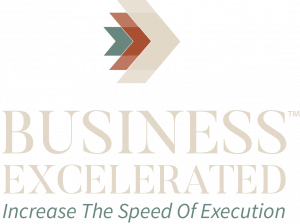One of the primary obstacles to embracing change lies in the focused effort needed to adopt fresh behaviors and habits. Human beings typically gravitate toward what is familiar, comfortable, and convenient, even if it does not align with their ultimate objectives.
Imagine someone who’s trying to eat healthier and lose weight. They know that fresh fruits and vegetables are better choices, but after a long day at work, they might find it much more familiar, comfortable, and convenient to stop by a fast-food drive-thru on their way home, despite their long-term goal of improving their health.
Overcoming people’s natural resistance to change requires us to remove barrier(s) of difficulty to make adoption of desired behaviors more easy.
Applying this concept to the example above, the individual might choose to subscribe to a meal-kit box or a meal delivery service to make healthy eating more easy when they are tired from a long day of work.
Within organizations, leaders need to make it more easy for their employees to adopt behavior changes by minimizing any hindrances, intricacies, and uncertainties that might deter them from taking action. Think about it this way, you cannot add simplicity, but you can remove complexity.
With that in mind, here is the first question I recommend that you ask (where I recommend you begin to make change more easy):
“How can we make communication more easy during this change or transformation?”
Here’s why
Many of the disruptions, roadblocks, or friction that occurs during change come from lack of communication or miscommunication. So start by creating a communication strategy that makes it easy for employees to ask questions, get updates, voice concerns, and offer their ideas, etc. This is an example of the “slow down to speed up” concept. Take your time to create communication strategies upfront, avoid as much confusion and frustration along the way, and see progress occur a little faster and easier.
- Help employees understand the reasons behind changes, and tailor your message to speak to things that contribute to their level of motivation to adopt the change.
- Set the expectations you will have of them (accountability, performance, behaviors, etc), and what they can expect from you as a leader (support, guidance, removal of barriers, etc.) [And then follow through on your promises in order to create trust which is essential to navigate change successfully – but this is a whole other topic].
- Offer clarity around what will be changing, as well as what might change, and what is not changing. Help to outline the expected impact, and the timeline. This helps create resiliency and adaptability. It is also another form of setting expectations which reduces confusion, worry, and frustration.
- Allow for updates to information on a consistent basis. Here is a good time to remember that there is a difference between consistency and frequency. Effective communication strategies attend to both. [There are times when I would recommend you stay somewhat high-level in your level of transparency when giving updates. Not to hide anything, but to allow for adjustments. Creating room for flexibility provides you with some wiggle room to shift expectations when needed without creating confusion or distrust].
- Communication goes both ways. Leaders need to have platforms and opportunities to receive information just as much as they deliver it. The best way to keep a pulse on how transitions and changes are going is to be able to receive feedback, understand concerns, and listen to ideas.
Effective communication can be complex. There are many layers, theories, and methods to consider. But a lot of the time we just make it complicated when it doesn’t need to be. So when you are considering what you want your communication strategy to look like during change in your organization, think about what would allow you to remove barriers and make change more easy. Reduce the propensity to complicate it, and use the “make it easier” objective to guide your decisions.
#changeleadership #leadershipfirstapproach #navigatechange




